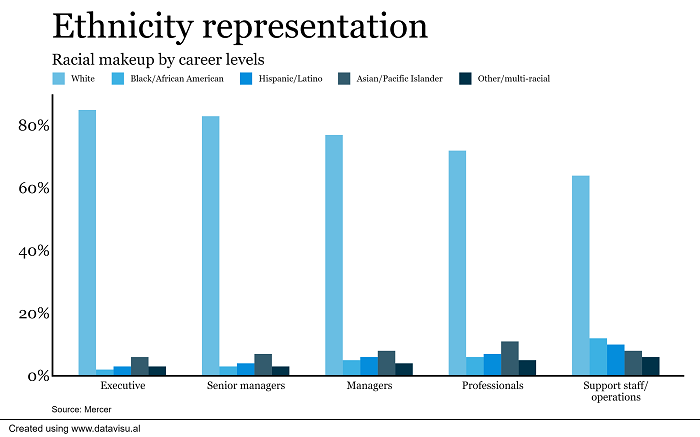If you hold up a diversity and inclusion mirror to the corporate world, what do you expect to see? Most likely, it’s going to be the same world we live in day in and out.

Dr. Tolbert presenting during her keynote Thursday, Oct. 29 during the virtual HR Technology Conference & Exposition.
“The structural inequities and uneven distribution of resources, and the culture wars that polarize ideas and values—these all exist parallel to one another on the macro level of our social reality and at the micro level of our professional one,” Dr. Tolonda Tolbert, co-founder and head of strategy and culture at Eskalera, said Thursday, closing out the third day of the virtual HR Technology & Conference Expo.
There are also two different worlds of cultural privilege within the corporate environment: one where you are the cultural insider and beneficiary of the system or the other, where you are an outsider and you must operate within the same cultural system but receive none of the benefits, she noted.
Yet, from the top down, DEI is often talked about more than actually acted on, she said.
“Unfortunately, in most cases, organizations don’t treat DEI as an essential business function,” she added. “But instead, ghettoize it to the point that there can be no meaningful influence or measurable impact.”
DEI is one of the few horizontals in a world of siloed verticals. Dr. Tolonda Tolbert
DEI is one of the few horizontals in a corporate world of siloed verticals, she said, and influences the whole employee lifecycle and organizational culture. “It impacts every process, practice and product,” she said, “therefore it should be approached from an integrated perspective.”
But, she noted, doing so requires the employer to align business practices with culture, which can be elusive and sometimes hard to put your finger on.
Also see Why leaders need to ‘put skin in the game’ on D&I
“They say it’s like the wind, an invisible but powerful force,” she noted of culture. “And you always know if you have the wind at your back or if you’re walking against it.”
The good news, she said, is technology can play a critical role in supporting an integrated approach to DEI.
Tech can help integrate core HR data systems like recruitments, payroll, perform management and professional development, so employers have a window into how employees are being recruited, onboarded, motivated, developed and advanced throughout their employment and how that intersects with demographics.
“This is the equity piece,” she said.
Click here to view the full keynote presentation.
But representation is just one piece of the puzzle, and while Tolbert noted most organizations keep good measurement on this, just having a diverse staff does not ensure equity of process or inclusive practices.
“Too often, companies see capturing data on DEI as an obligation rather than an opportunity,” she said. “They suffer from a poverty of the imagination and don’t seem to ask the right questions about the data.”
Related Here’s how employers can avoid losing talented women during the pandemic
Companies mostly play with the data at the aggregated level, often diluting how much insight they might get, she said.
For example, for representation, they might capture 50% of women across the entire organization.
 “That looks good from far, but it’s far from good,” she warned.
“That looks good from far, but it’s far from good,” she warned.
Because when you cut the data by the level, she noted, then you’re able to see the lion’s share of women are at the lowest levels in the organization. “And that’s just problematic,” she added.
It’s critical for organizations to get more specific and granular with their data so they can gain valuable insight not only of the institutional issues of systemic bias and discrimination from the top down, but also their manifestation in workplace culture from the bottom up, she said.
To look deeper, employers need to ask equity questions: What are the gaps in pay, professional development, advancement and retention across race, gender and other identities within the organization?
“Explaining why one person of color is spending more time in position before being promoted than others is very different than trying to explain away the fact that all people of color are spending more times in position than all people of European decent,” she warned.
Luckily, from the top down, we can use tech to help us tell the real story of DEI in our organizations beyond the colorful company brochures and statements of solidarity, she noted.
“By asking the right questions, you are able to manage the technology rather than the tech managing you,” she said.
The HR Tech Conference will feature free, virtual content through Oct. 30. There is still time to register. For more information, click HERE.